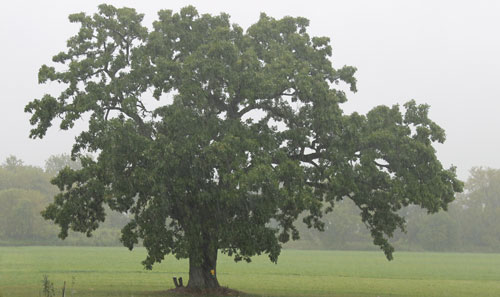I’m starting this post with a quote from T. S. Eliot’s poem The Love Song of J. Alfred Prufrock to
celebrate our peach harvest. Terry has been trying to grow peaches for several
years; each year the winter was too cold until this year. The mild winter allowed
the flower buds to survive. Unfortunately, a late frost killed most of them.
Our crop—the whole crop—is shown in this picture. That’s right, one peach. We
picked it on Monday and cut it into four parts so we could each have some. We could
have waited a day or two. The peach was quite firm, but sweet and flavorful, not
sour. Maybe next year we’ll have TWO peaches.
 |
| Peach harvest, 2012. Surprisingly blemish-free for not being sprayed, don't you think? |
During the week that I was gone, the orioles and
rose-breasted grosbeaks left us. Summer is slipping away. I am fully immersed
in the cycle of harvest, put up, harvest, put up, caught up in the desperate
race to eat, blanch, roast, freeze, and/or can everything that comes in from
the garden. Over the years, I’ve gotten a pretty good idea of quotas. We won’t
use more than a dozen quarts of dill pickles. Eight pints of sweet pickles is
plenty. I’m done with those. I’m just getting started on freezing green beans;
the goal is 20 10-oz bags.
Just this week the standard tomatoes have gotten ripe. (We’ve
had cherry tomatoes for three weeks.) Oh my, that first ripe tomato is almost
orgasmic. It is just so much more flavorful than anything that can be found in
a grocery store. If I could only grow one thing in my garden, it would be
tomatoes. Tomatoes and cream cheese on toast for breakfast. BLTs for supper. Tomato
wedges with salt and pepper for lunch. Can’t get enough. I’ll feel differently
in 6 weeks.
Terry and I went to the McHenry County Fair in Woodstock
Wednesday night. We had mini-donuts and Chicago-style hotdogs complete with the
celery salt and nuclear green pickle relish. The hot item of the fair was the
nubby ball, a large inflated plastic ball with little nubbies all over it. I
expected to see them for sale among the vendors, but did not. Apparently they
were all being given away as prizes from the carnival games.
We watched some dog obedience demonstrations before going to
the 4-H building. The number of entries in drawings and photos were pretty
constant. Every year there are fewer and fewer entries in the gardening
section. I was surprised at the size of the zucchini. For God’s sake, anyone
can grow a baseball bat zucchini. The trick is to get them when they are 4 to 6
inches long and still edible. Size does matter, but inversely. Sewing,
quilting, canning, and baking seem to be shrinking as well. There were two
entries in “Dry Cereal Mix.” Are you kidding me? Since when is mixing dry
cereal with raisins, peanuts and M&Ms a domestic skill?
We got our usual ice cream cones in the back of one of the
commercial buildings. I got a full scoop more than Terry did. It took me awhile
to get through it. All we had left to visit were the animal buildings, and I
had to finish eating before entering that world of manure smells. We stood
outside finishing our cones. Meanwhile, the dog obedience demonstrations had
cleared out of that arena, and the stage had been taken by a man playing “Bad,
Bad Leroy Brown” on the accordion.
From where we stood, we could see a big crowd by the swine barn.
Terry had read in the paper that three women had died in the previous year, and
each had bequeathed a considerable sum of money for a new swine barn. The crowd
was attending the dedication. The dedication of a new swine building takes
longer than you might think. I finished my enormous ice cream cone, and we
walked through the sheep barn while the speakers were still going strong. I
heard a man say, “a quarter of a million dollars.”
“Could that new pole barn have cost a quarter of a million?”
I asked Terry.
“Probably,” he replied. “That’s a hundred thousand in cement
alone.”
Upon closer inspection, we saw that some of the concrete had
been reused. Still, with the bleachers around the show ring, the roof and
supporting posts, and the fencing, I could see that a $250K was a reasonable price.
The gutters, a sign informed us, were donated by a local business.
Of course we went to the poultry barn. Maybe it was my
imagination, but it seemed like there were fewer sheep, swine, and cattle and
more goats and poultry. The rise of the hobby farmer. The poultry barn seemed
different to me this year. For one thing, I didn’t notice the smell as much,
presumably because I am becoming used to the smell of chicken poop. Also, I
looked at the breeds with more than idle curiosity. I wouldn’t want to have the
ugly bare-necked chickens, but the Mille Fleur bantams, maybe. All things
considered, however, none of the chickens were as beautiful as my girls.






























